*NURSING > TEST BANK > NR 511 Test Bank | AANP-FNP lightning round review-#2|Complete Solutions;Chamberlain College of Nurs (All)
NR 511 Test Bank | AANP-FNP lightning round review-#2|Complete Solutions;Chamberlain College of Nursing LATEST 2021/2022
Document Content and Description Below
AANP-FNP lightning round review-#2 1.How many sets of Kegels should be done each day to help with urinary incontinence? 2. What is the first line treatment for allergic rhinitis? -. 3. What is the ter... m used for the loss of high-pitched tones in geriatrics? 4. What type of hearing loss does cerumen impaction cause? 5. You see an older woman bending over leaving on her shopping cart at the grocery store. What is the likely diagnosis? 6. Multiple myeloma is disease of what? 7. What test in the office can you use to help diagnose sciatica? 8. I have heel pain that is worse in the morning. What is my likely diagnosis? 90. The Lachman test is used to help diagnose what? 10. Other tests for acl include 11. What is the treatment for gout and what would be the medication instructions for a flare? 12. What is a sign of colchicine toxicity? 13. What is a common cause of posterior knee pain? 14. Cotton wool spots, neovascularization and microaneurysms are all Eye exam findings in what condition? 15. And what about AV nicking and what it is? 16. What is the treatment for bacterial sinusitis? 17. I’m tired, have a sore throat and swollen posterior cervical nodes on exam. What is the likely diagnosis? - 18. Recall that swollen ANTERIOR cervical nodes are seen in 19. What is a common side effect of Pyridium, an anti-spasmodic for dysuria? 20. What would be included in your list of differentials for hematuria? 21. What is the medication treatment for MRSA? 22. What are some symptoms a patient with lupus would complain of? . 23.And what is the lab that you would order it to confirm it? 24. What is the term used to describe dry, itching skin? 25. What is the most common kind of skin cancer? 26. What medication is used to treat a cat or dog bite? 27. What do you think of when you hear a bright beefy red rash and what is the treatment? 28. How would you describe the prostate in BPH? 29. A1C> what is considered T2DM? 30. My A1C is >10, what would be the medication of choice? 31. Hypothyroidism is most common in what population? 32. Your pediatric pt has bloody discharge in his ear, what’s the likely dx? 33. Your patient presents with a burn and blisters are present. What degree burn is this? 34 What is the treatment for pertussis? 35. What bug causes the greatest mortality in community acquired pneumonia? 36. What would be seen on xray of a pt with TB? 37. Most common side effect of long-term inhaled corticosteroid use? - 38. S3 heart sound is a sign of what? - 39. What medication do use to treat a fib? 40. What is pulsus paradoxus? 41. The upcoming July 4th holiday reminds you of what diagnosis? 42. Someone with high triglyceride levels is at increased risk of what? 43. Subclinical hypothyroidism is described as what lab readings? 44. A positive Markle test is significant of what? 45. What differentials do you think of in someone with left upper quadrant pain? 46. What about left lower quadrant? 47. A positive Murphy’s sign is indicative of what? 48. What diagnostic test would you order if this were positive? 49. What is the first line treatment for GERD? 50. I was going to go over hepatitis B markers but I think it’s harder to say that out loud versus seeing it on paper so going to skip that but of course remember to review those for the exam too! 51. What diagnostic test should be done for suspicion of appendicitis? 52. What is the confirmatory test for HIV? 53. What is the treatment for syphilis? 54. And what are some presenting features of syphilis? 55. Gonorrhea treatment? 56. Cervicitis is seen in which diagnoses? - 57. I am a healthy 63-year-old patient, what is my goal BP according to JNC 8? 58. What should we keep in mind when prescribing for the elderly population? 59. A low HDL and high trig level always means what? 60. The S1 is the closure of which valves? 61. On exam you feel a weakened peripheral pulse, what diagnosis do you think of? 62. An absent red reflex is indicative of what? 63. During an eye exam you note absent venous pulsations, what is this related to? 64. The Dix Hallpike maneuver is used to test for what condition? 65. What is the most well-known medication treatment for Vertigo? 66. What medication is prescribed for essential tremors? 67. A young adult patient states that she is experiencing episodes of vision loss and abnormal limb sensations. What would be at the top of your list of differentials? 68. When assessing a patient for dementia, what is the FIRST and best thing you should do? 69. Name a difference between dementia and delirium? 70. What is the MAIN cause of delirium? 71. Cranial Nerves review (just going over the MAIN ones I’ve seen in reviews/questions for the exam) 72. UTI treatment? 73. What about UTI in a pregnant pt? 74. Anxiety…which meds to use for situational? 75. What about OCD? 76. Which population has the highest suicide rate? 77. What symptom is specific to the geriatric population when you think of UTIs? 78. PNA in Geri’s, how do they present? 79. What is the difference between sensitivity and specificity? 80. What vitamin deficiency can alcohol lead to? 81. MMSE, what score indicates dementia? 82. 10mm+ for PPD is needed for continued investigation of TB for what two populations? 83. What food is advised to try first in infants 4-6 months of age? 84. What degree of curvature in scoliosis should warrant bracing? 85. Tanner staging, anyone need a refresher on this? 86. What is the leading cause of death in children? 87. What sound during the Ortolani maneuver is a positive finding and signifies a possible hip abnormality (hip dysplasia) in infants. – 88. A newborn's mother is discovered to be HBsAg (hepatitis B surface antigen) positive. Which of the following would you recommend for this infant? 89. Which method is used to diagnose gonorrheal pharyngitis or proctitis? 90. What is the treatment for a medial tibial stress fracture (aka “shin splints”) Chapter 3. Health Promotion Multiple Choice Identify the choice that best completes the statement or answers the question. _ 1. Which of the following is a primary prevention measure for a 76-year-old man newly diagnosed with a testosterone deficiency? a. Calcium supplementation b. Testicular self-examination c. Bone density test d. Digital rectal examination __ 2. Which of the following is an example of secondary prevention in a 50-year-old woman? a. Yearly mammogram b. Low animal fat diet c. Use of seat belt d. Daily application of sunscreen __ _ 3. Which of the following is an example of tertiary prevention in a patient with chronic renal failure? a. Fluid restriction b. Hemodialysis 4 days a week c. High-protein diet d. Maintenance of blood pressure at 120/80 __ 4. Immunizations are an example of which type of prevention? a. Primary b. Secondary c. Tertiary True/False Indicate whether the statement is true or false. 1. Prevalence is the number of new cases of a particular disease. __ __ 2. The number of cases of a particular disease for the past 5 years is an example of the incidence rate. 3. “There are 1,185,000 cases of HIV/AIDS in the United States” is an example of the morbidity rate. __ 4. Endemic is the term used when the presence of an event is constant. __ 5. The “bird” flu of 2005 to 2006 is considered a sporadic outbreak. _ 6. A pandemic affects many communities in a short period of time. Chapter 5. Evidence-Based Care Multiple Choice Identify the choice that best completes the statement or answers the question. ___ 1. Which of the following are parts of evidence-based practice? a. Clinician b. Patient c. Evidence d. All of the above __ 2. Which is the most important question to ask in nursing research? a. What findings constitute evidence? b. How will the findings be used? c. Is this a randomized controlled trial? d. What theory is being utilized? __ __ 3. Nursing research should be utilized by: a. Nurses at the bedside b. Advanced practice nurses c. Nurse researchers d. Nurses at all levels of practice __ 4. Applying evidence at the point of care requires: a. Readily available evidence-based resources b. Ability to review research literature c. Single articles in journals d. Current textbooks _ 5. Practice guidelines are designed to: a. Be inflexible b. Be utilized in every circumstance c. Provide a reference point for decision making d. Be created by a professional organization to guide the practice of a profession _ 6. Which of the following is a crucial element of developing a guideline? a. Creating a physician expert panel b. Reviewing the literature with ratings of available evidence c. Conducting an external review of a guideline d. Developing evidence-based tables ___ _ 7. Which of the following would be considered the research design for Level I evidence? a. Single, well-designed randomized clinical trial b. Systematic review of randomized clinical trial studies c. Well-designed controlled trials without randomization d. Systematic reviews of descriptive or qualitative studies ___ _ 8. Which of the following would be considered the research design for Level II evidence? a. Single descriptive or qualitative study b. Well-designed case control or cohort studies c. Single, well-designed, randomized clinical trial d. Systematic review of randomized clinical trial studies __ 9. Which of the following would be considered the research design for Level III evidence? a. Well-designed controlled trials without randomization b. Systematic reviews of descriptive or qualitative studies c. Systematic review of randomized clinical trial studies d. Opinion of authorities and expert committees __ __ 10. Which of the following would be considered the research design for Level IV evidence? a. Single descriptive or qualitative study b. Opinion of authorities and expert committees c. Systematic review of randomized clinical trial studies d. Well-designed controlled trials without randomization 11. Which of the following would be considered the research design for Level V evidence? a. Systematic review of randomized clinical trial studies b. Well-designed controlled trials without randomization c. Systematic reviews of descriptive or qualitative studies d. Single descriptive or qualitative study __ __ 12. Which of the following would be considered the research design for Level VI evidence? a. Systematic reviews of descriptive or qualitative studies b. Opinion of authorities and expert committees c. Well-designed case control or cohort studies d. Single descriptive or qualitative study ___ 13. Which of the following would be considered the research design for Level VII evidence? a. Well-designed controlled trials without randomization b. Opinion of authorities and expert committees c. Well-designed case control or cohort studies d. Single descriptive or qualitative study Chapter 6. Neurological Problems Multiple Choice Identify the choice that best completes the statement or answers the question. ____ 1. Which statement about confusion is true? a. Confusion is a disease process. b. Confusion is always temporary. c. Age is a reliable predictor of confusion. d. Polypharmacy is a major contributor to confusion in older adults. ___ _ 2. Sondra’s peripheral vestibular disease causes dizziness and vertigo. Which of the following medications will help to decrease edema in the labyrinth of the ear? a. Meclizine b. Diphenhydramine c. Diamox d. Promethazine ___ 3. The hallmark of an absence seizure is: a. No activity at all b. A blank stare c. Urine is usually voided involuntarily d. The attack usually lasts several minutes __ __ 4. How often should drug levels be monitored when a seizure medication has controlled the seizures, and the drug level is adequate? a. Every 3 months b. Every 6 months c. Annually d. Whenever there is a problem ____ 5. Which of the following persons fits the classic description of a patient with multiple sclerosis (MS)? a. A teenage male b. A 65-year-old male c. A 25-year-old female d. A 60-year-old female ___ _ 6. Which of the following is a specific test to MS? a. Magnetic resonance imaging (MRI) b. Computed tomography (CT) scan c. A lumbar puncture d. There is no specific test. __ __ 7. Which drug for Alzheimer’s disease should be administered beginning at the time of diagnosis? a. Cholinesterase inhibitors b. Anxiolytics c. Antidepressants d. Atypical antipsychotics __ __ 8. Which hematoma occurs along the temporal cranial wall and results from tears in the middle meningeal artery? a. Epidural hematoma b. Subdural hematoma c. Subarachnoid hematoma d. Intraparenchymal hemorrhage __ __ 9. Which cranial nerve is affected in a patient with a cerebrovascular accident who has difficulty chewing? a. CN V b. CN VII c. CN IX d. CN X __ __ 10. Which statement best describes a carotid bruit? a. It is felt with the middle three fingers over the carotid artery. b. A bruit becomes audible when the lumen is narrowed to 1 mm or less. c. A low-pitched bruit is a medical emergency. d. The higher the pitch of the bruit, the higher the degree of stenosis. ___ _ 11. Which patient is more likely to have a cluster headache? a. A female in her reproductive years b. A 40-year-old African American male c. A 55-year-old female who drinks 10 cups of coffee daily d. A 45-year-old male awakened at night __ __ 12. Inattention and a sleep-wake cycle disturbance are the hallmark symptoms of? a. Dementia b. Alzheimer’s disease c. Parkinson’s disease d. Delirium ___ 13. Which type of meningitis is more benign, self-limiting, and caused primarily by a virus? a. Purulent meningitis b. Chronic meningitis c. Aseptic meningitis d. Herpes meningitis __ __ 14. Which is the most sensitive neuroimaging test to evaluate patients with encephalitis? a. MRI b. CT c. Electroencephalogram (EEG) d. An initial lumbar puncture ___ _ 15. What is usually the first sign or symptom that a patient would present with that would make you suspect herpes zoster? a. A stabbing pain on one small area of the body b. A vesicular skin lesion on one side of the body c. A pain that is worse upon awakening d. A lesion on the exterior ear canal __ _ 16. Gabby, aged 22, has Bell’s palsy on the right side of her face. Her mouth is distorted, and she is concerned about permanent paralysis and pain. What do you tell her? a. “Most patients have complete recovery in 3 to 6 months.” b. “Unfortunately, you’ll probably have a small amount of residual damage.” c. “Don’t worry, I’ll take care of everything.” d. “You may have a few more episodes over the course of your lifetime but no permanent damage.” ___ _ 17. Sam, aged 65, is started on L-dopa for his Parkinson’s disease (PD). He asks why this is necessary. You tell him: a. “L-dopa is neuroprotective.” b. “The primary goal of therapy is to replace depleted stores of dopamine.” c. “This is the only drug that can provide symptomatic benefit.” d. “This is the initial monotherapy drug.” ___ _ 18. Which of the following signs is seen in a patient with more advanced PD? a. Resting tremor b. Bradykinesia c. Rigidity d. Postural instability ___ 19. Which of the following is the most commonly experienced symptom of migraine? a. Light sensitivity b. Pulsatile pain c. Sound sensitivity d. Experiencing an aura ___ _ 20. Which of the following characteristics differentiates peripheral vertigo from central vertigo? a. The duration of central vertigo is shorter than that of peripheral vertigo. b. There is an auditory-associated symptom with peripheral vertigo and a visual-associated symptom with central vertigo. c. Central vertigo is positional, and peripheral vertigo is not. d. The onset of central vertigo is more sudden than that of peripheral vertigo. _ __ 21. Carotid endarterectomy should be considered only for symptomatic patients with greater than what percentage of stenosis? a. Greater than 25% b. Greater than 50% c. Greater than 75% d. Only for 100% occlusion __ _ 22. What antiplatelet agent is most widely used for secondary prevention of stroke? a. Aspirin b. Ticlopidine c. Clopidogrel d. Aspirin and clopidogrel ____ 23. Which adjunctive diagnostic test should be used in the work-up of a patient with suspected Creutzfeldt-Jakob disease or transient epileptic amnesia? a. MRI b. CT c. Cerebrospinal fluid analysis d. EEG 24. Which herbal preparation may cause delirium and should be avoided in an elderly patient? a. Sam-e b. Saint John’s Wort c. Melatonin d. Saw Palmetto ___ _ 25. Which of the following activities is part of the functional activities questionnaire? a. Asking the patient to unravel a Rubik’s cube b. Determining if the patient can drive on the highway c. Asking the patient about a news event from the current week d. Seeing if the patient can keep his or her home clean _ 26. About 90% of all headaches are? a. Tension b. Migraine c. Cluster d. Without pathological cause _ ___ 27. Which statement is true regarding driving and patients with a seizure disorder? a. Once diagnosed with a seizure disorder, patients must never drive again. b. After being seizure free for 6 months, patients may drive. c. Each state has different laws governing driving for individuals with a seizure disorder. d. These persons may drive but never alone. __ __ 28. Julie has relapsing-remitting muscular sclerosis. She has not had a good response to interferon. Which medication might help given intravenously once a month? a. Glatiramer acetate b. Natalizumab c. Fingolimod d. Glucocorticoids __ __ 29. The ‘freezing phenomenon’ is a cardinal feature of? I do not remember how the question was written a. Parkinson’s disease b. Alzheimer’s disease c. A CVA d. Bell’s palsy _ __ 30. A ratchet-like rhythmic contraction, especially in the hand, during passive stretching is known as? a. Spinothalamic dysfunction b. Ratcheting c. Cogwheeling d. Hand tremors _ __ 31. Clinical features of insidious onset, slow progression, and a lack of other findings to explain the symptoms are fairly diagnostic of which condition? a. Guillain-Barré syndrome b. Parkinson’s disease c. Alzheimer’s disease d. Huntington’s disease ___ _ 32. Which condition is characterized by the impaired ability to learn new information along with either a cognitive disturbance in language, function, or perception? a. Guillain-Barré syndrome b. Parkinson’s disease c. Alzheimer’s disease d. Delirium _ __ 33. A score of 20 to 25 on this test indicates early-stage Alzheimer’s disease: a. SLUMS b. MoCA c. FAST d. MMSE ___ _ 34. Intravenous thrombolytic therapy following an ischemic CVA should be given within how many hours of symptom onset? a. 1 hour b. 3 hours c. 6 hours d. 12 hours ___ _ 35. When administered at the beginning of an attack, oxygen therapy may help this kind of headache? a. Tension b. Migraine c. Cluster d. Stress Chapter 7. Skin Problems Multiple Choice Identify the choice that best completes the statement or answers the question. ___ 1. Simon presents with alopecia areata with well-circumscribed patches of hair loss on the crown of his head. How do you respond when he asks you the cause? a. “You must be under a lot of stress lately.” b. “It is hereditary. Did your father experience this also?” c. “The cause is unknown, but we suspect it is due to an immunologic mechanism.” d. “We’ll have to do some tests.” 2. Which of the following is “a linear crack extending from the epidermis to the dermis?” a. An ulcer b. A fissure c. Lichenification d. An excoriation ____ 3. A bulla is: a. A vesicle larger than 1 cm in diameter b. An elevated solid mass with a hard texture; the shape and borders can be regular or irregular c. A superficial elevated lesion filled with purulent fluid d. Thinning of the skin (epidermis and dermis) that appears white or translucent ____ 4. An example of ecchymosis is: a. A hematoma b. A keloid c. A bruise d. A patch ____ 5. When looking under the microscope to diagnose an intravaginal infection, you see a cluster of small and oval to round shapes. What do you suspect they are? a. Spores b. Leukocytes c. Pseudohyphae d. Epithelial cells ____ 6. Your patient is in her second trimester of pregnancy and has a yeast infection. Which of the following is a treatment that you usually recommend/order in nonpregnant patients, but is listed as a Pregnancy category D? a. Vagistat vaginal cream b. Monistat combination pack c. Terazol vaginal cream d. Diflucan, 150 mg ____ 7. Tinea unguium is also known as: a. Onychomycosis b. Tinea versicolor c. Tinea manuum d. Tinea corporis ____ 8. Sally, age 25, presents with impetigo that has been diagnosed as infected with Staphylococcus. The clinical presentation is pruritic tender, red vesicles surrounded by erythema with a rash that is ulcerating. Her recent treatment has not been adequate. Which type of impetigo is this? a. Bullous impetigo b. Staphylococcal scalded skin syndrome (SSSS) c. Nonbullous impetigo d. Ecthyma ____ 9. Mark has necrotizing fasciitis of his left lower extremity. Pressure on the skin reveals crepitus due to gas production by which anaerobic bacteria? a. Staphylococcal aureus b. Clostridium perfringens c. S. pyrogenes d. Streptococcus ____ 10. When using the microscope for an intravaginal infection, you see something translucent and colorless. What do you suspect? a. A piece of hair or a thread b. Hyphae c. Leukocytes d. Spores ____ 11. Marci has a wart on her hand. She says she heard something about “silver duct tape therapy.” What do you tell her about his? a. It is an old wives’ tale. b. It is used as a last resort. c. Salicylic acid is more effective. d. It is a simple treatment that should be tried first. ____ 12. Which is the most potent and irritating dose of tretinoin? a. 0.05% liquid formulation b. 0.1% cream c. 1% foam d. 0.02% cream ____ 13. Of the following types of cellulitis, which is a streptococcal infection of the superficial layers of the skin that does not involve the subcutaneous layers? a. Necrotizing fasciitis b. Periorbital cellulitis c. Erysipelas d. “Flesh-eating” cellulitis ____ 14. Mandy presents with a cauliflower-like wart in her anogenital region. You suspect it was sexually transmitted and document this as a: a. Filiform/digitate wart b. Dysplastic cervical lesion c. Condyloma acuminata d. Koilocytosis ____ 15. Jeffrey has atopic dermatitis. You are prescribing a low-dose topical corticosteroid for him. Which would be a good choice? a. Betamethasone dipropionate 0.05% b. Hydrocortisone base 2.5% c. Halcinonide 0.1% d. Desonide 0.05% ____ 16. Harvey has a rubbery, smooth, round mass on his chest that is compressible and has a soft-to-very-firm texture. What do you diagnose this as? a. A lipoma b. A nevi c. A skin tag d. A possible adenoma ____ 17. Which of the following statements is accurate when you are removing a seborrheic keratosis lesion using liquid nitrogen? a. Do not use lidocaine as it may potentiate bleeding. b. Pinch the skin taut together. c. Use gel foam to control bleeding. d. This should be performed by a dermatologist only. ____ 18. The “B” in the ABCDEs of assessing skin cancer represents: a. Biopsy b. Best practice c. Boundary d. Border irregularity 19. The majority of HSV-1 and HSV-2 infections are asymptomatic so that only which elevated antibody titer shows evidence of previous infection? a. IgA b. IgE c. IgG d. IgM ____ 20. Eighty percent of men have noticeable hair loss by what age? a. 35 b. 50 c. 70 d. 85 ____ 21. Prevalence of psoriasis is highest in which group? a. Scandinavians b. African Americans c. Asians d. Native Americans ____ 22. The most common precancerous skin lesion found in Caucasians is: a. A skin tag b. Actinic keratosis c. A melanoma d. A basal cell lesion ____ 23. Ian, age 62, presents with a wide, diffuse area of erythematous skin on his lower left leg that is warm and tender to palpation. There is some edema involved. You suspect: a. Necrotizing fasciitis b. Kaposi’s sarcoma c. Cellulitis d. A diabetic ulcer ____ 24. Josh, aged 22, has tinea versicolor. Which description is the most likely for this condition? a. There are round, hypopigmented macules on his back. b. Josh has red papules on his face. c. There are crusted plaques in Josh’s groin area. d. There are white streaks on his neck. ____ 25. Tori is on systemic antifungals for a bad tinea infection. You are aware that the antifungals may cause: a. Renal failure b. Skin discoloration c. Breathing difficulties d. Hepatotoxicity 26. Which scalp problem [Show More]
Last updated: 1 year ago
Preview 1 out of 110 pages
Instant download
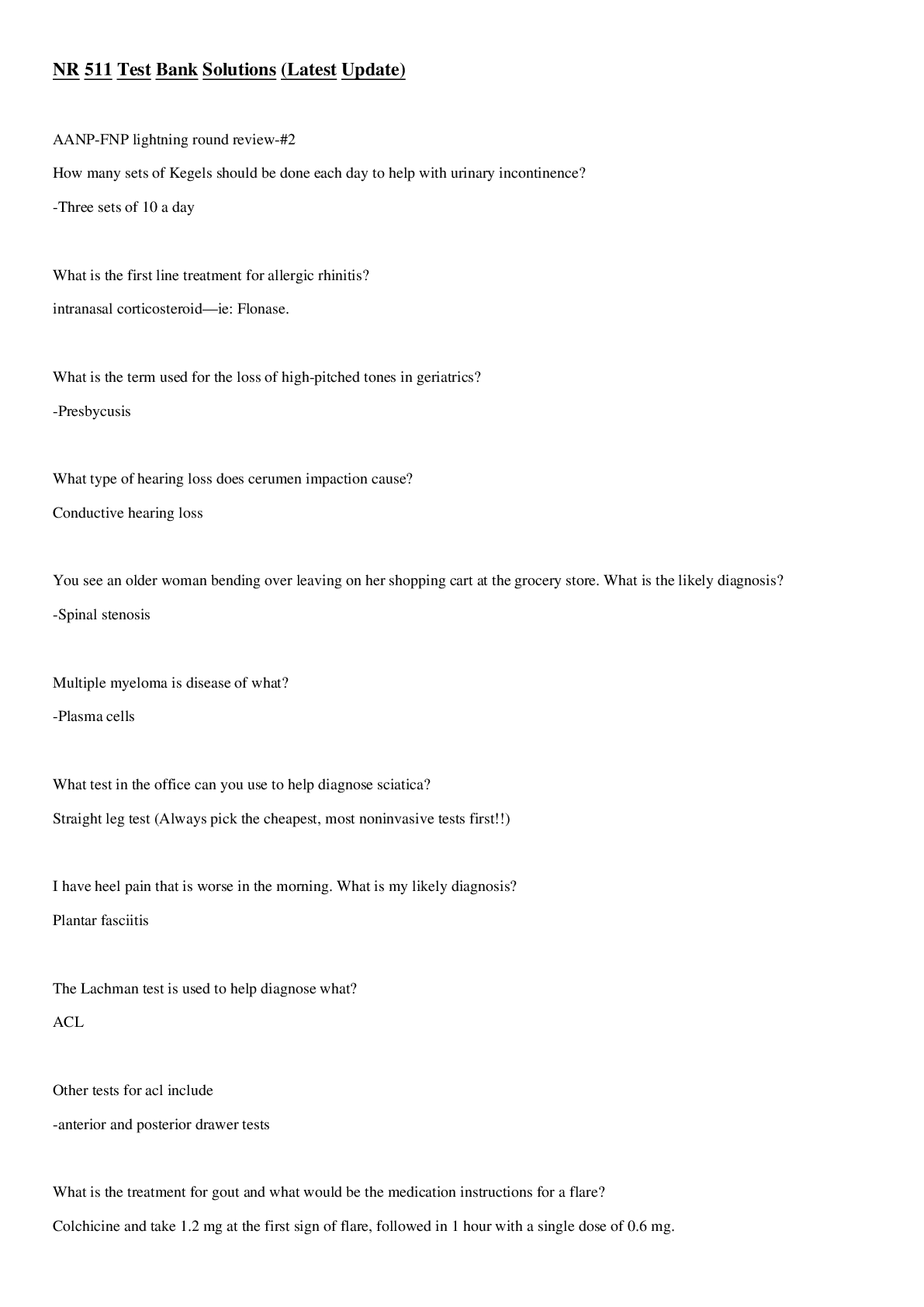
Buy this document to get the full access instantly
Instant Download Access after purchase
Add to cartInstant download
Reviews( 0 )
Document information
Connected school, study & course
About the document
Uploaded On
Aug 15, 2021
Number of pages
110
Written in
Additional information
This document has been written for:
Uploaded
Aug 15, 2021
Downloads
0
Views
39




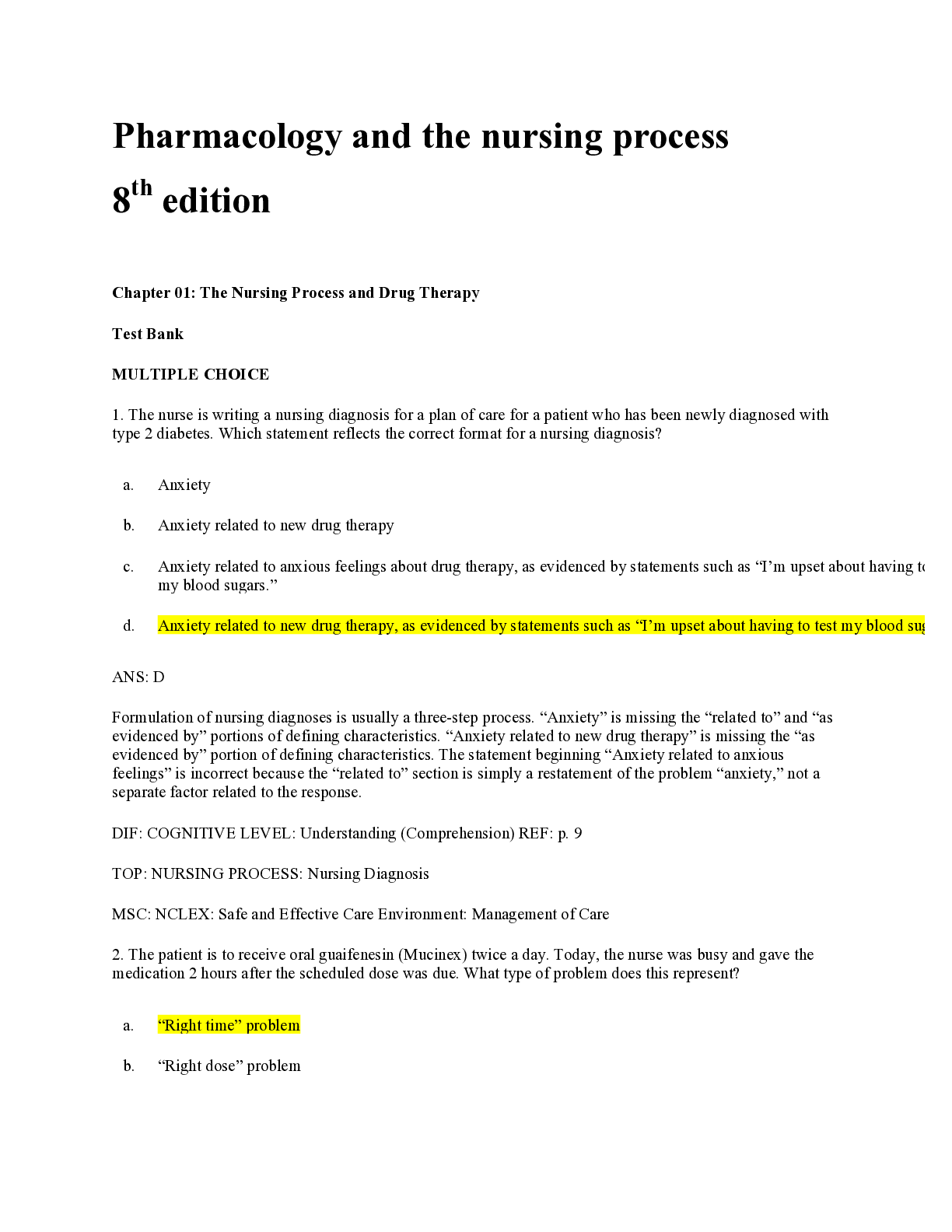

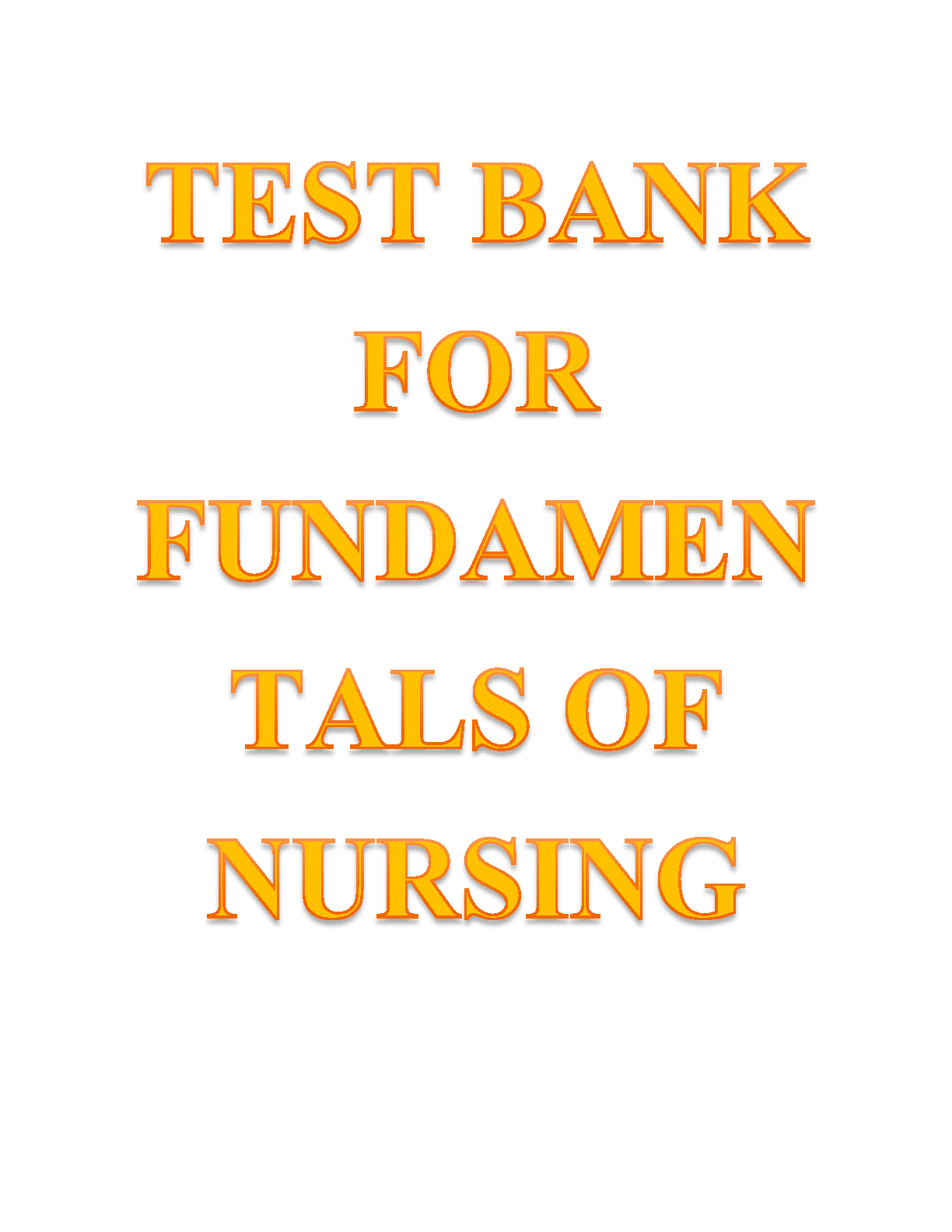


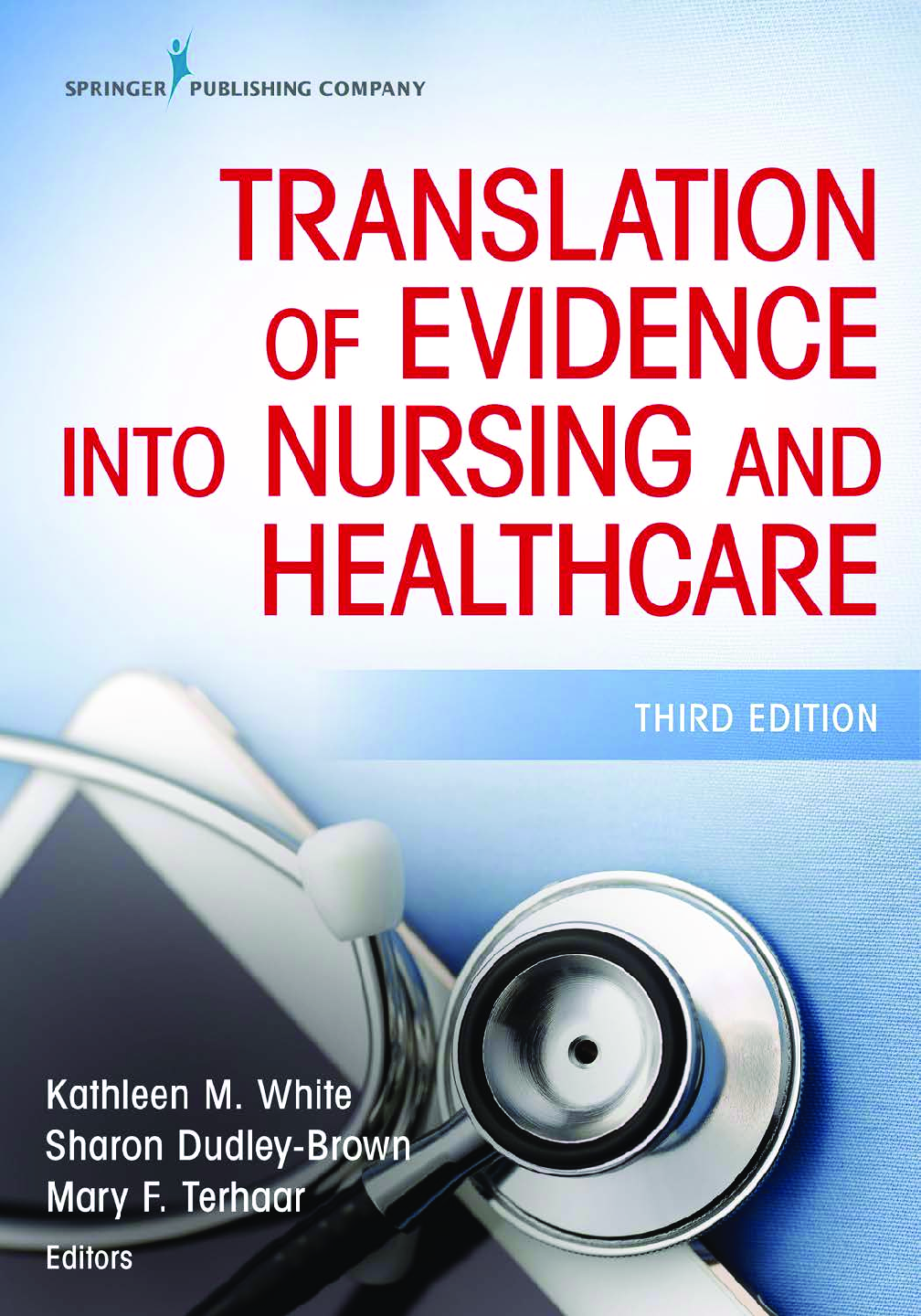


.png)

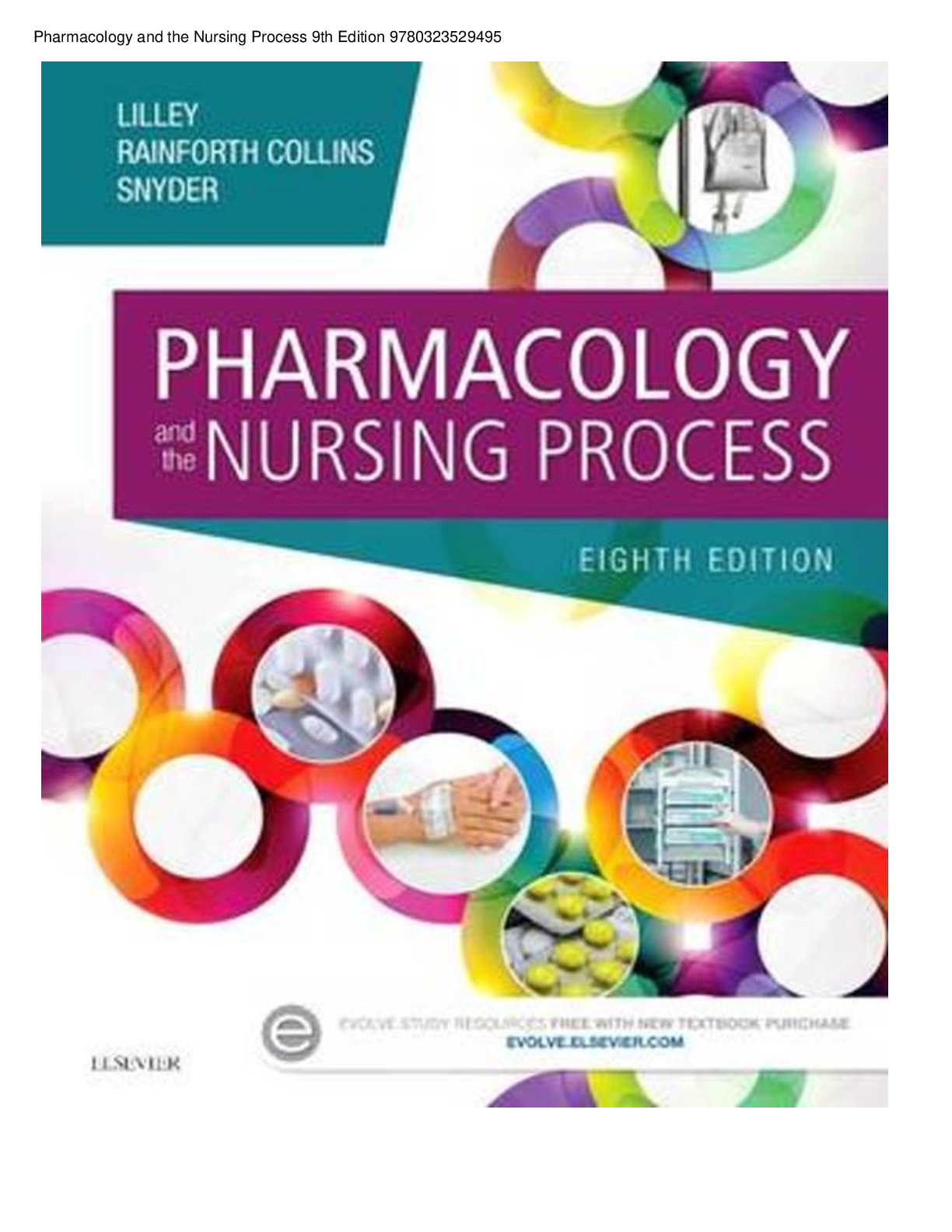
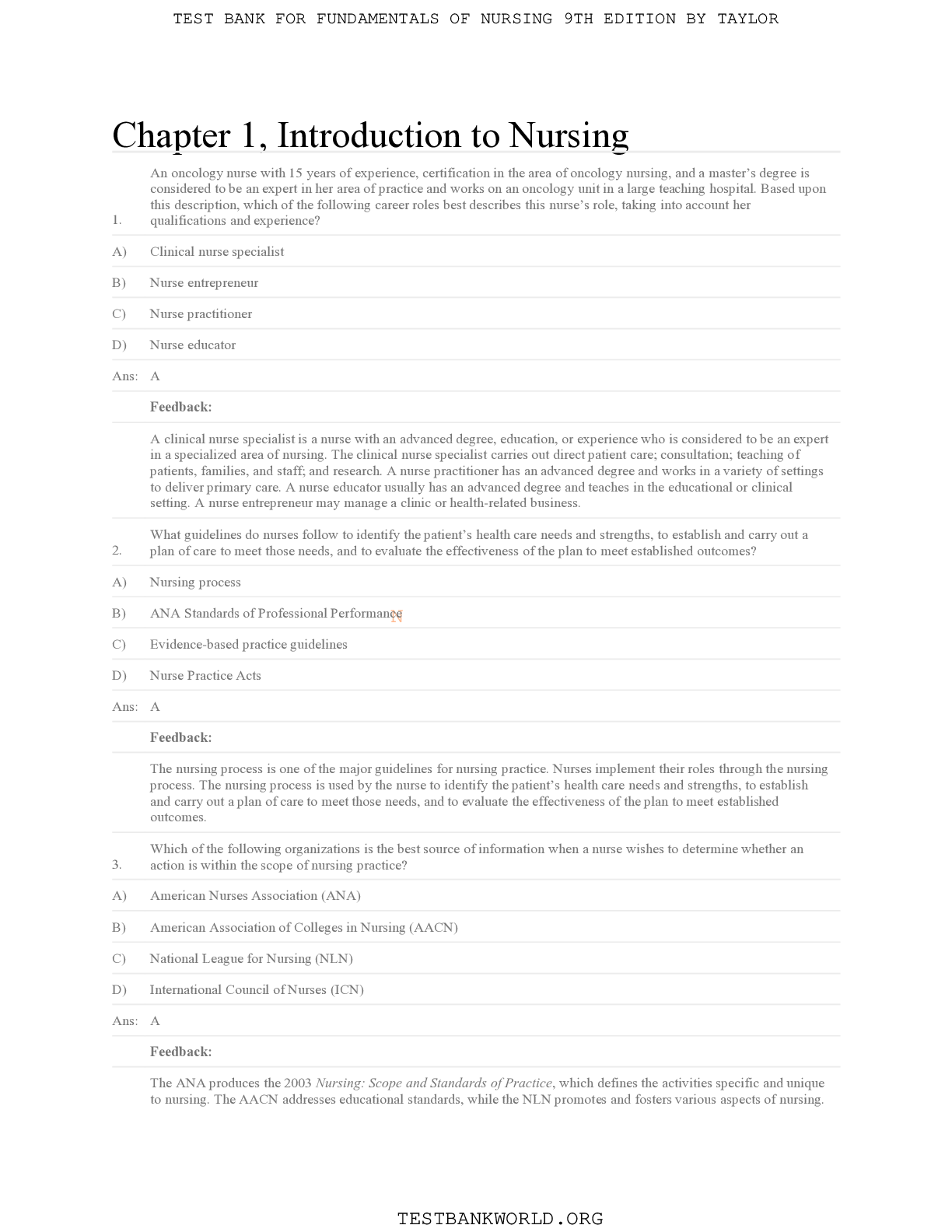

.png)




